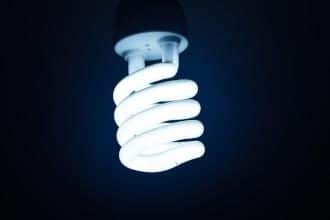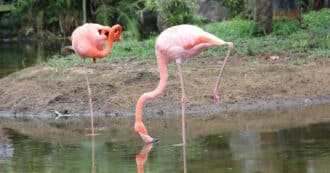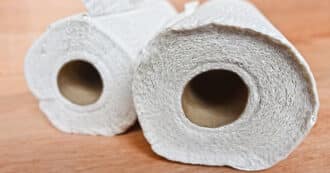By Sydney Cohen – It is not ideal for light bulbs to be thrown out because the glass can break and corrode the plastic bag in your household waste bin. Additionally, damaged light bulbs might release gases including argon, nitrogen, or helium, that contribute to global warming.
How To Dispose of Light Bulbs
Different types of light bulbs need different types of disposal in order not to harm the environment.
How To Dispose of An Incandescent Bulb
Most incandescent light bulbs have toxic chemicals so you can’t just dump them into the trash. You must also avoid glass fragments as you would when disposing of any other glass.
The bulb should be wrapped before it goes in the garbage, so you and the trash collector can avoid the danger of broken glass in garbage bags.
If your bulb is intact, you can find creative ways to up-cycle it. Incandescent lights may be transformed into Christmas decorations for small trees, tiny vases for flowers, or miniature lamps. Of course, you have to be cautious with all DIY projects that involve glass.
How To Dispose of A Compact Fluorescent Light or A Fluorescent Light Bulb
Compact fluorescent bulbs have much less heat than traditional fluorescent bulbs, and therefore they are highly useful. Unfortunately, their efficiency is because they contain mercury, which when disposed of can pose environmental threats.
Mercury contaminates groundwater, making its way to our water supply. If properly processed, mercury, glass, and steel parts in the bulbs of compact fluorescent lamps can all be reused or recycled. Recycling instructions can vary, so check your local recycling department’s regulations.
If your light bulb is damaged, repurpose the bulbs. There are a number of organizations and websites such as recycleabulb.com that provide free collection to be taken to recycling centers throughout America.
How To Dispose of Fluorescent Tubes
Fluorescent tubes also contain mercury, making their recycling difficult. In some cases, fluorescent tubes are very dangerous.
Fluorescent tubes have been considered hazardous and have never been accepted for public collection because of their fragile nature and toxic components. However, a lot of recycling facilities accept fluorescent tubes for processing through specialized programs. If not, these tubes should be taken to a hazardous waste collection center.
How to Dispose of Halogen Light Bulbs
The filaments in halogen light bulbs have wires that are pressed into a high-performance glass. It is an efficient bulb that can be utilized in light fixtures, both indoors and outdoors. You can dispose of a halogen bulb in a typical household recycling container.
While fluorescent halogen bulbs are much safer in preventing breakage because of their thick glass, it is better if they are not broken when disposed of. It is recommended to put the used bulb back in the packaging container or wrap the bulb to avoid breaking.
If you don’t want the bulb in your trash can, check with your local recycling center if there’s an approved program to collect halogen bulbs.
How to Dispose of LED Light Bulbs
Rapidly emerging in the home lighting market, Light Emission Diodes (LEDs) emit light by passing electrons into a semiconductor material causing an electroluminescence reaction. This is similar to what happens during a solar eclipse.
They are energy efficient, and not only produce 35,000 to 50,000 light hours with less energy consumption than incandescent bulbs, but they’re also safer to dispose of in your home waste.
LED bulbs contain no hazardous substances and can be safely tossed into the recycling or regular trash bin.
Religion and Disposing of Light Bulbs
What has hopefully become clear through this article is that how a light bulb must be disposed of depends on what kind of light bulb it is, i.e. what it’s made of. Recognizing the differences between lightbulbs and how they can best be disposed of takes a combination of knowledge, ability and facilities equipped for proper disposal. This is a powerful lesson for the religious person.
“And There Was Light”!
Everything in Creation has its own role. To remove one species can throw off the balance of an entire ecosystem. Similarly, everything in Creation must be dealt with in its appropriate manner. God willing, we are heading towards a more circular economy, where everything can be easily recycled and reused, instead of ending up in landfills. Yet for now, most of our societies are based on landfills.
Knowing what can go safely to a landfill, and what can’t, may seem small when it comes to a single lightbulb. However, if millions of people aren’t disposing of their lightbulbs correctly, we can end up poisoning ourselves through the chemicals in those lightbulbs. Everything in Creation has a purpose and a place. When we learn and act in accordance with this awareness, we can create God’s kingdom on Earth.
How To Reuse Used Light Bulbs
Old light bulbs can be repurposed in an enjoyable and artistic way. Try making painted holiday decorations, mosaics, or even making unique sculptures. If you can, try to find creative ways to up-cycle and recycle light bulbs in your home!
* Featured image source







